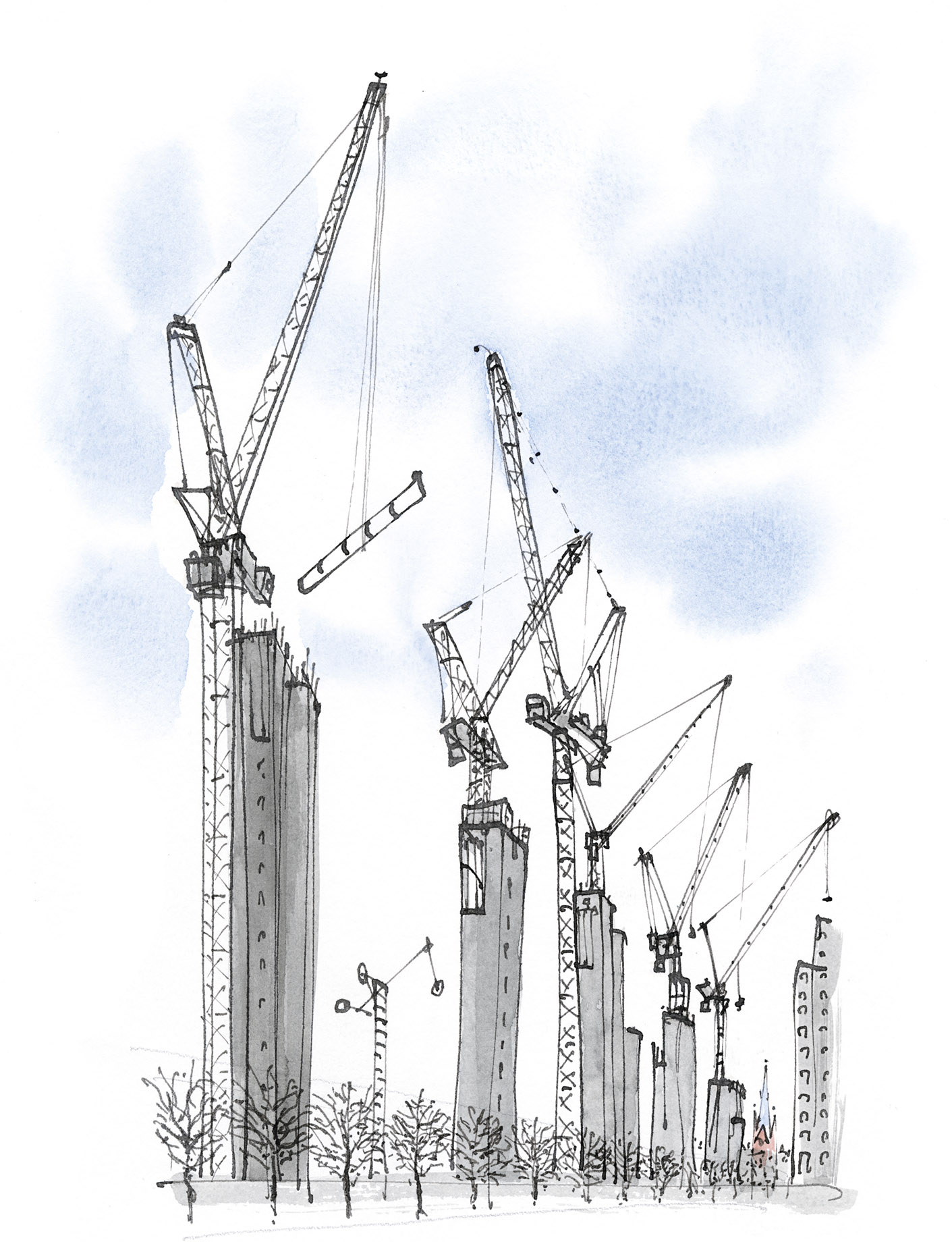Park
At Camden Town’s western border lies Regent’s Park. Its general style is formal and it is surrounded by splendid terraces, almost invisible in summer when the leaves are out but easy to take in as a whole when the trees are bare. I love the long straight Broad Walk that runs unbroken through the park from north to south. The terraces’ architect, John Nash, had originally intended there to be a long strip of water beside it, but instead there are rows of trees four lines deep on either side along the northern stretch and orderly flowerbeds along the southern. Yet despite the general air of order and neatness in much of the park, other parts of it have been allowed to remain unmown, or sown with beautiful wild flowers as a reminder of the more laid-back aspects of this stunning public space.
The whole park is an astonishing survival of openness and distance in the middle of a crowded city, with continual surprises, wonderful details and spectacular sunsets. I particularly like drawing the lake, with its pretty islets and the floating birdlife they attract. The enormous annual Frieze Art Fair and Frieze Masters is now the biggest annual commercial event in the park, whereas its offshoot, Frieze Sculpture, enlivens its seperate open-air patch where everyone can be intrigued by the works while also enjoying their verdant surroundings.
The approaches to the park reveal its less prominent features, like the magnificent archways at either end of Chester Terrace, their lettering beautiful compared with the Inverness Street Market sign. On hot summer nights in the crescent, when the breeze is in our direction, we can still hear the cries of the Zoo’s fed-up animals.







There are two big open spaces within the park: on the east, the fairly flat area in front of the Nash terraces, used for playing rugby and practising helicopter landings; to the west, the vast empty area sloping gently downwards away to the west of the Broad Walk and used mostly for cricket and football. Around it are several clumps or clusters of trees beneath which the grass, cow parsley and wild flowers are left unmown and, in May or June, looking enchantingly jungly and impenetrable.



As you reach Hanover Gate, the minaret of London Central Mosque rises beyond the boating pool with its yellow plastic canoes. (The Boating Lake’s plastic boats for grown-ups are bigger and blue.) The stretch of canal running through the park ends here with Quinlan Terry’s fairly recent row of pastiche classical, baroque and rococo villas arranged like an architectural exhibition on the park side. Across the canal from them in London’s second-biggest garden is the US ambassador’s residence, the pretext for the thundering fleets of enormous military helicopters that periodically deliver American presidents dropping by on state visits.

Right: Regent’s Canal: Villa on Outer Circle, 2018
Regent’s Park’s most distinguished modern building is Denys Lasdun’s Royal College of Physicians at its south-eastern corner, opened in 1964.





Cumberland Terrace is John Nash’s longest and grandest neo-classical work, yet it was unfashionable and run-down after the war and in 1962 almost demolished. From the Broad Walk you can take it in as a whole, with the tops of the Ampthill Estate high-rises in the background. It is most spectacular in afternoon or evening sunlight. It looks lovely in winter and spring, but is almost invisible at the height of summer except for a few gaps in the trees, which is when I like it best as a subject – drawing a detailed elevation of a very long terrace can get tedious.

